Homepage / News Details
Food and beverage service commonly used disinfectant and chemical disinfection matters needing attention
- Categroy:News
- Author:
- Origin:
- Release Time:2020-04-03 13:43
- Views:
【Summary】 Food and beverage service commonly used disinfectant and chemical disinfection matters needing attention
Food and beverage service commonly used disinfectant and chemical disinfection matters needing attention
【Summary】
Food and beverage service commonly used disinfectant and chemical disinfection matters needing attention
- Categroy:News
- Author:
- Origin:
- Release Time:2020-04-03 13:43
- Views:
Common disinfectant
(1) bleaching powder: the main ingredients for calcium hypochlorite, also contains calcium hydroxide, calcium oxide, calcium chloride, etc. Preparation solution should be first to add a small amount of water, tune into a paste, then add water and stir into the emulsion, static precipitation, take clear liquid. The bleaching powder can be used in the environment, work station, equipment, utensils and hands the meal inunction and immerses disinfection.
(2) calcium hypochlorite (bleaching powder): fully dissolved in water when used, ordinary tablets should be crushed and added to the water to dissolve, efferent tablets can be directly dissolved.
(3) sodium hypochlorite: when used, mix thoroughly in water.
(4) sodium dichloroisocyanurate (youchlorojing) : fully dissolved in water when used, ordinary tablets should be crushed after adding water to stir fully dissolved.
Effervescent tablets can be directly added to dissolve.
(5) chlorine dioxide: because the prepared water solution is unstable, should be added before the use of activator for immediate use.
Use range with bleach.
Because the oxidation is very strong, should avoid contact with oil, in order to prevent the oxidation.
(6) iodine volt: 0.3%-0. 5% iodine volt can be used for hand immersion disinfection.
(7) new clean and out: 0.1% new clean and out can be used for hand immersion disinfection.
(8) ethanol: 75% ethanol can be used for disinfection of hands or operation tables, equipment, tools, etc.90% ethanol can be used for disinfection of cutting boards and tools.
Two, the preparation method of disinfectant for example
For example, 1L of disinfectant with an effective chlorine concentration of 250mg/L was prepared from each bleaching powder tablet containing 0.25g of effective chlorine.
(1) mark a 1L scale mark in advance in a special disinfection container.
(2) add water to the scale in the container.
(3) crush one piece of bleached powder into water.
(4) stir until the tablet is fully dissolved.
Three, chemical disinfection matters needing attention
(1) the disinfectant used shall be stored within the warranty period at the prescribed temperature and other conditions.
(2) it shall be prepared in strict accordance with the prescribed concentration and the solid disinfectant shall be fully dissolved.
(3) the matched disinfectant should be replaced regularly, usually every 4 hours.
(4) regularly measure the concentration of disinfectant when using.
If the concentration is lower than the requirement, the disinfectant should be replaced immediately or added to an appropriate amount.
(5) ensure the disinfection time, general meal utensils disinfection should be effective for more than 5 minutes, or according to the instructions for the use of disinfectant products.
(6) the disinfectant shall be completely immersed in the disinfectant.
(7) before disinfection meal utensils should be washed, to avoid oil and dirt affect the disinfection effect.
(8) after disinfection, rinse the disinfectant with clean water, drain or bake it.
(9) dinner utensils should be used for thermal disinfection.
Releate News

Time of issue : 2024-04-22 08:56:03

Time of issue : 2024-04-15 16:52:27

Time of issue : 2024-04-09 10:13:04
CONTACT US
PRODUCTS
CALCIUM HYPOCHLORITE
TCCA
SDIC
BCDMH
FEEDBACK
© 1999-2018 北京网站建设有限公司 Copyright © 2012-2022 All Rights Reserved Powered by www.300.cn 冀ICP备12012949号 津公网安备 12010302002173号 Seo tag

